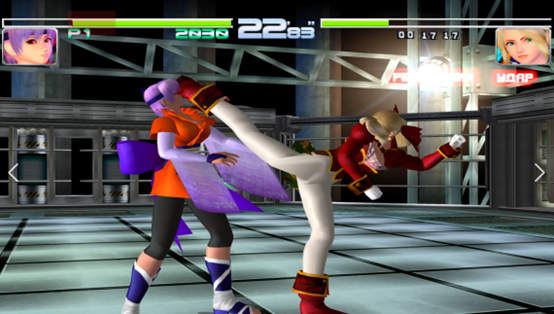
The beginning of a “what-if” saga in the 3D fighting game world
A tribute to Dead or Alive 2 with Unico’s Nova Blast Candy Cab

October 16, 1999, Tecmo released the sequel to the previously well-received new 3D fighting franchise, Dead or Alive. Developed by Team Ninja, the game originally launched for the Sega NAOMI arcade and later received home console ports to the Dreamcast and PlayStation 2. At the time, the game received universal acclaim and sold over 1.5 million units worldwide.
History of Sega NAOMI
Launched in 1998, NAOMI was the successor to Sega’s Model 3 hardware. NAOMI and Sega’s Dreamcast also shared similar hardware components. What made NAOMI stand out, however, was its extra system and video memory — even four times more sound memory than the Dreamcast.

History of Sega NAOMI
Launched in 1998, NAOMI was the successor to Sega’s Model 3 hardware. NAOMI and Sega’s Dreamcast also shared similar hardware components. What made NAOMI stand out, however, was its extra system and video memory — even four times more sound memory than the Dreamcast.
The impressive hardware specs
CPU: 2-core processor (SH-4 SIMD, PowerVR2)
Cores: 6 cores (SH-4 SIMD, 5 PowerVR2 cores)
GPU geometry processor: Hitachi SH-4 SIMD @ 200 MHz
GPU rasterizer: NEC-VideoLogic PowerVR2 @ 100 MHz
VRAM: 16 MB (effectively up to 42–127 MB with texture compression)
Sound engine: Yamaha AICA Super Intelligent Sound Processor @ 67 MHz
Internal CPU: 32-bit ARM7 RISC CPU @ 45 MHz
Overall memory: 92–506 MB
Internal processor cache: 120 KB
DOA’s bitter rivalry against the industry giant Namco and its Tekken series
In January this year, Tekken’s director Katsuhiro Harada wrote a lengthy Twitter post sharing his history with Dead or Alive creator Tomonobu Itagaki. For years, Itagaki had publicly criticized the Tekken series. Since Team Ninja didn’t have the same media connections or marketing budget that Namco and Sega had for their 3D fighting franchises, this polarizing approach seemed like a genius marketing stunt.

The game as a perfect showcase of the platform’s power
What helped Dead or Alive 2 shine was the strength of the NAOMI hardware. The system allowed DOA2 to deliver silky-smooth 60 fps gameplay with detailed 3D graphics back in 1999, along with breakable environments featuring walls, glass, and stair transitions. The sound board also boosted immersion by rendering reverb, positional sound, and clean voice samples without compression artifacts.

Conclusion
Sadly, not every promising franchise can last forever. After the series reached its peak with DOA 3, the studio struggled to find its footing for another major success. Tomonobu Itagaki left Tecmo in 2008 following a lawsuit against the company for unfair treatment.
But we will always remember what the Dead or Alive series brought us; the less competitive but more stylish and experimental side of 3D fighting games compared to Tekken or Virtua Fighter.
And now, you can try this modern classic on our Nova Blast Candy Cab, experience an all-in-one gaming setup for everyone, from noob to pro. (link to the products)
